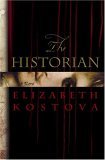
The Little Country by Charles de Lint
Sometime in early 2005 I had the luck of picking up a Charles de Lint novel at used bookstore when an unexpected layover happened. The book was Forests of the Heart , and it was really excellent, so de Lint went on the list of authors to keep a watch out for. At a more recent trip to a used bookstore, I scored a few old deLint novels and threw them on the Stack (yes, capitalizing the Stack is necessary due to its size and strange dominance over much of my life). Last year as I waited for an anticipated book to arrive in the mail I needed a book to read, and grabbed The Little Country.
, and it was really excellent, so de Lint went on the list of authors to keep a watch out for. At a more recent trip to a used bookstore, I scored a few old deLint novels and threw them on the Stack (yes, capitalizing the Stack is necessary due to its size and strange dominance over much of my life). Last year as I waited for an anticipated book to arrive in the mail I needed a book to read, and grabbed The Little Country.
The Little Country is set in Cornwall, England in modern times (it was written in the early nineties, so a couple references in the book may seem dated, but this has no impact on the story). Within the novel is another story (classic play within a play sort of thing) that is set around 1900, but the exact timing isn't clear or really important.
The central character is Janey Little - a moderately popular musician, in her circles, who specializes in older Celtic style music. She is a realistic character with plenty of flaws, and very likeable. An old book, with much mystery about it is discovered in the attic, and the story is off. This book has been long desired by a secret society with ambitions to take over the world (yes that is it, but it's not nearly as cheesy as it sounds). The book is special, even magical and the center of many problems about to be faced by Janey, her grandfather, best friend, and fresh off the boat, former lover. Yep, there is a traditional love story buried in here, but those who don't go for romances will still enjoy the story.
The story within the story follows another female central character, and is altogether more fantastical in nature, but still grounded in a world where magic has moved on. There are witches, smalls, and faeries. In the end you know the stories are going to come together, and they do - though both could really stand on their own with deLint's skill at telling a captivating story.
In the end, I enjoyed The Little Country quite a bit. I suppose it would be 6-7 on my 10-point scale where 5 is a neutral, take-it or leave-it novel and 10 is unsurpassed. It wasn't quite as good as Forests of the Heart , but I will probably read it again one day. I continue to be amazed and entertained by de Lint's ability to take old tales, myths, and legends and relate them to the modern world and human nature. Another plus is his ability to create real, believable characters and his skill at writing realistic and likeable women. All the de Lint novels I have read feature female characters at the center. And finally, music lovers should love deLint as music plays a key role in his writings and form the backbone of his stories. Any music lover will appreciate it, but anyone with a like or love of traditional style Celtic music absolutely must read de Lint.
, but I will probably read it again one day. I continue to be amazed and entertained by de Lint's ability to take old tales, myths, and legends and relate them to the modern world and human nature. Another plus is his ability to create real, believable characters and his skill at writing realistic and likeable women. All the de Lint novels I have read feature female characters at the center. And finally, music lovers should love deLint as music plays a key role in his writings and form the backbone of his stories. Any music lover will appreciate it, but anyone with a like or love of traditional style Celtic music absolutely must read de Lint.










